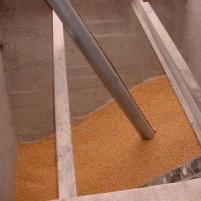EU cereal deficit 25 million tonnes

This harvesting season the European Union is will be facing a cereal shortage of 25 million tonnes, said Allgrain Brokers at the semi-annual meeting of the Dutch Royal Committee of Grain Traders.
The shortage will be mainly on the account of maize (20 million tonnes).
Allgrain estimates the wheat shortage at 2.5 million tonnes.
According to
the Raamsdonksveer, The Netherlands based trader it will be difficult to
find substitutes. It is expected to use about 3 million tonnes of sorghum from
the US in animal feed.
Next to that it is expected that about 5 million
tonnes of old-harvest maize from Brazil can be purchased as well as several
million tonnes from the Ukraine.
This country has installed an export
stop for wheat in view of the upcoming elections and increasing prices. However
the EU hopes that this will be a temporarily measure and that exports will
commence again at the end of the year.
Zero GMO
tolerance
European traders hardly trust wheat and maize from the US and
Argentina because of the zero-tolerance for GMOs in the EU.
It has been
the EU’s own fault that this shortage is now troubling the market. Not only has
the EU for a long time ignored signals on diminishing stock volumes, but in the
mean time sharpened tolerance levels for GMO seeds.
“If the EU would
allow a 0.2% or 0.3% tolerance for GMO we could easily import several million
tonnes of maize gluten form the US”, said Anne Broekema, chairman of the Royal
Committee of Grain traders.
Australia is not an option either to purchase
cereals, because of the poor harvest due to the severe draught the country is
facing. Allgrain expects that the cereal deficit in the EU will remain at least
5 million tonnes.
Fewer animals
To solve this gap the only
counteract will be to keep fewer pigs and poultry in the southern and eastern
part of Europe. This will probably cause meat prices to increase again, but “we
cannot give any predictions on that”, Allgrain said.











